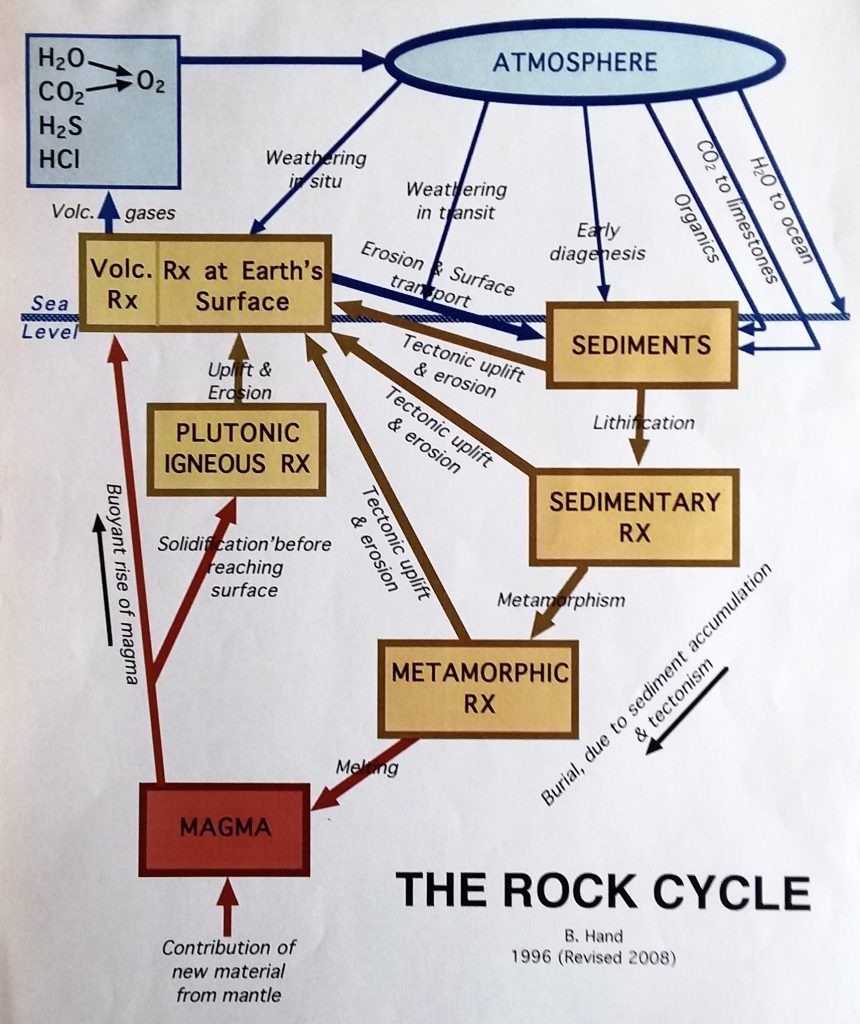17 Rocks and the Rock Cycle (I)
Identify processes of the rock cycle and the different rock types associated with each step.
Introduction
In this section we will learn about the rock cycle and the different types of rocks. Please watch this video for an introduction
As you can see, the rock cycle is never ending. The video explained how rocks change from one rock type to another, and—just as important—it showed the processes that cause those changes.
Learning the rock cycle and understanding the processes involved helps all of us. For example, you saw in the video how all rocks are eroded into fine particles. This is how soil forms, through the breakdown of rocks. We need soil to survive—imagine trying to grow vegetables without it. This is an immediate connection to the food chain. The rock cycle also gives scientists and engineers an idea on where energy sources (mainly fossil fuels, which are found only in sedimentary rock) and building materials such as marble or granite may be located. We will see throughout the course how this cycle plays into just about every aspect of geology.
Here’s a visual representation of the rock cycle:

As you continue through the module, refer back to this image. Remember that all the processes of the rock cycle are interconnected.
This is a more elaborate and detailed rock cycle diagram (courtesy Dr. Bryce Hand, Emeritus Professor of Geology, Syracuse University).

